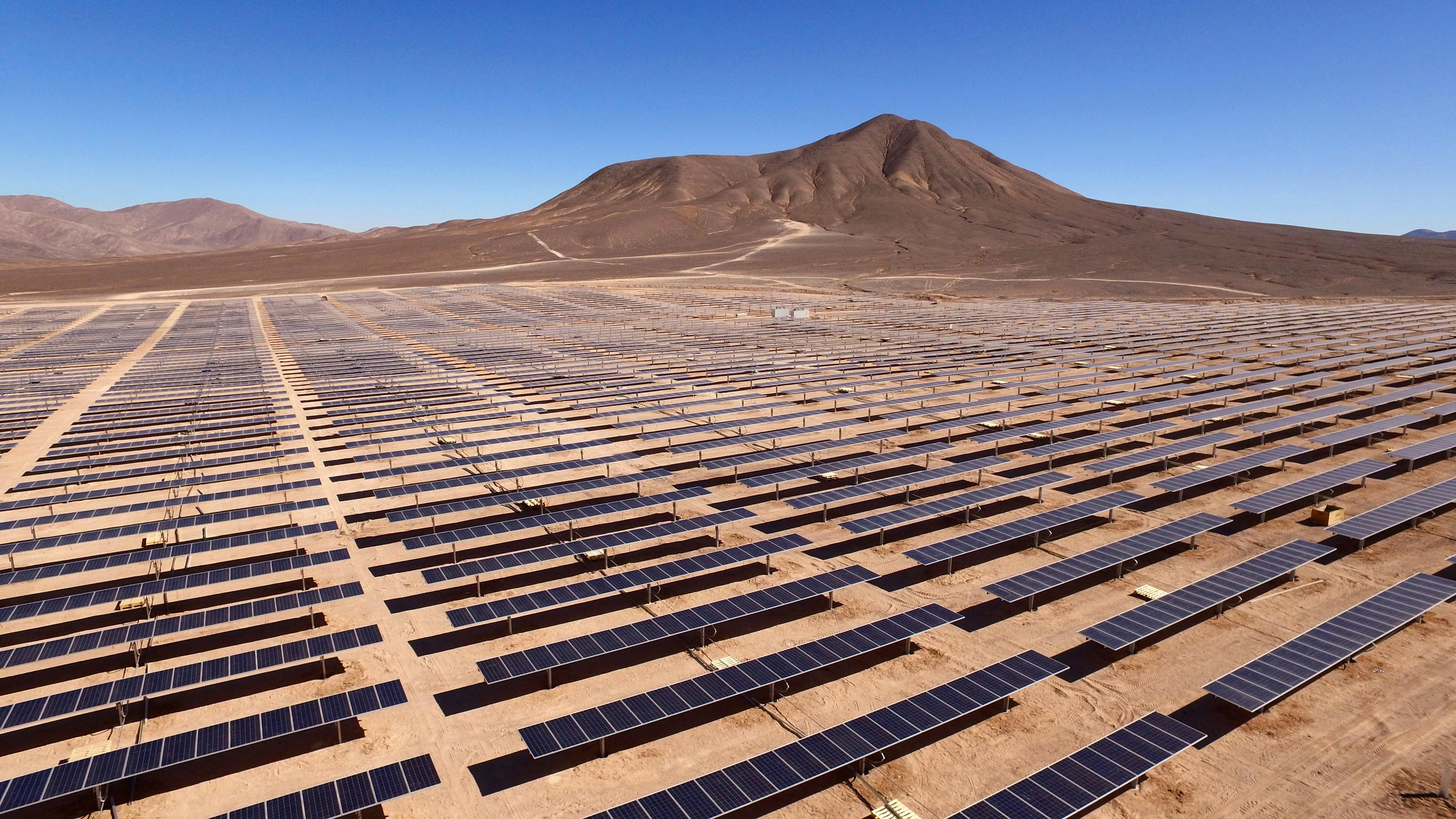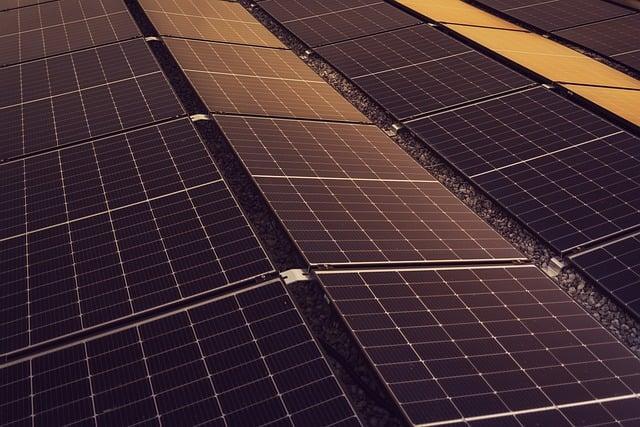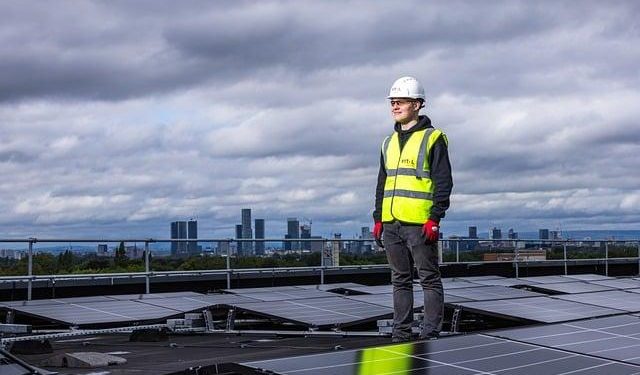In the vast tapestry of Earth’s landscapes, a new kind of horizon is emerging—one that shimmers with the promise of a sustainable tomorrow. As the sun rises, it casts its golden light not only on fields and forests but also on the sleek, orderly arrays of solar panels that dot the terrain, capturing energy that is as ancient as time itself. Welcome to the solar farms of the future, where innovation meets nature in a harmonious dance of technology and ecology. As we stand on the brink of a new era in renewable energy, it is time to explore what lies ahead for these sprawling powerhouses of the 21st century. From advancements in photovoltaic technology to groundbreaking approaches in land use, the solar farms of tomorrow promise to be more efficient, more integrated, and more essential than ever before. Join us as we delve into this radiant frontier and discover what to expect from the solar farms that will power our future.
Harnessing Tomorrows Sun: Innovative Technologies on the Horizon
As we venture into the future, solar energy is poised to become a cornerstone of sustainable power generation. The upcoming wave of solar farms will be characterized by several groundbreaking technologies that promise to maximize efficiency and minimize environmental impact. One of the most exciting developments is the integration of bifacial solar panels, which capture sunlight on both sides, increasing energy yield without requiring additional land space. Moreover, the adoption of floating solar farms on bodies of water is set to revolutionize the landscape of solar energy, providing a solution for regions with limited land availability.
Innovation doesn’t stop there. The advent of agrivoltaics, where solar panels coexist with agricultural activities, highlights the potential for a harmonious relationship between energy production and farming. This dual-use approach not only optimizes land use but also provides a cooler microclimate for crops. Furthermore, smart solar tracking systems equipped with AI-driven analytics are being developed to ensure panels are always positioned at the optimal angle to the sun, enhancing energy efficiency. These innovations represent a glimpse into the exciting future of solar energy, where technology and sustainability intersect to create a brighter tomorrow.
- Bifacial Solar Panels: Dual-sided energy capture for increased efficiency.
- Floating Solar Farms: Utilizing water surfaces to expand solar capacity.
- Agrivoltaics: Combining solar power and agriculture for mutual benefits.
- Smart Solar Tracking Systems: AI-enhanced positioning for optimal sunlight exposure.

Designing for Efficiency: The Role of AI and Machine Learning in Solar Farms
In the quest for maximizing efficiency in solar farms, artificial intelligence and machine learning have emerged as pivotal technologies. These advanced systems are reshaping how solar farms are designed and operated, ensuring that every photon is utilized to its fullest potential. AI algorithms can predict weather patterns and adjust solar panel angles accordingly, optimizing energy capture throughout the day. Machine learning models analyze vast amounts of data to identify patterns and inefficiencies that human operators might miss, allowing for proactive maintenance and operational adjustments.
- Predictive Maintenance: By continuously monitoring equipment performance, AI can predict failures before they occur, reducing downtime and maintenance costs.
- Energy Output Optimization: Machine learning algorithms adjust panel orientation and other parameters in real-time to ensure optimal energy production.
- Resource Allocation: AI can help allocate resources more efficiently, determining where additional panels or storage might be needed based on historical data and future projections.
As these technologies advance, the integration of AI and machine learning in solar farms promises not only to enhance efficiency but also to drive innovation in renewable energy solutions. The future of solar energy is bright, and these intelligent systems are key players in harnessing the sun’s power more effectively.

Environmental and Economic Impact: Balancing Sustainability and Profitability
As the world pivots towards renewable energy, solar farms are emerging as pivotal players in this green revolution. They present a dual opportunity: harnessing the sun’s power while offering economic advantages. However, achieving a balance between environmental sustainability and profitability remains a nuanced endeavor. On one hand, solar farms can significantly reduce carbon emissions and decrease reliance on fossil fuels. On the other hand, their economic feasibility often hinges on factors like location, technology, and government incentives.
- Innovative Technologies: Expect advancements in photovoltaic cells, leading to higher efficiency and lower costs.
- Smart Integration: Enhanced grid integration with AI and IoT, optimizing energy distribution and reducing waste.
- Community Involvement: Local partnerships may increase, ensuring that solar farms contribute to community development.
- Land Use Considerations: Balancing the use of arable land with solar installations to minimize ecological disruption.
For investors and policymakers, the challenge lies in crafting strategies that incentivize the growth of solar farms without compromising environmental integrity. By navigating this balance thoughtfully, solar farms of the future can serve as beacons of sustainable and profitable energy solutions.

Strategic Policy and Community Engagement: Building Support for Future Solar Projects
Engaging communities in the strategic planning of solar farms is crucial for fostering long-term support and ensuring successful implementation. Policy-makers and solar companies must collaborate with local stakeholders to address potential concerns and highlight the benefits of solar energy projects. This involves organizing public forums, workshops, and information sessions to educate residents on the environmental and economic advantages of solar farms.
- Transparent communication regarding project timelines and impacts
- Opportunities for local employment and skill development
- Inclusion of community feedback in project planning
- Commitment to environmental stewardship and sustainability
By prioritizing community engagement and aligning policies with local interests, future solar projects can gain the trust and cooperation of the communities they aim to serve. This collaborative approach not only paves the way for smoother project execution but also strengthens the relationship between developers and residents, ensuring that solar energy becomes a shared vision for a sustainable future.
To Wrap It Up
As we stand on the precipice of a new era in renewable energy, the solar farms of the future beckon with promises of innovation, efficiency, and sustainability. These sprawling landscapes, shimmering with the promise of clean power, invite us to reimagine our relationship with energy and the environment. As technology continues to advance, we find ourselves not just observers but active participants in a dynamic transformation that holds the potential to reshape our world. With each sunrise, the possibilities expand, illuminating a path toward a brighter, more sustainable future. As we conclude our exploration of these futuristic solar farms, we are reminded that the journey toward harnessing the sun’s boundless energy is not just a scientific endeavor but a testament to human ingenuity and our unwavering commitment to a greener tomorrow.

































